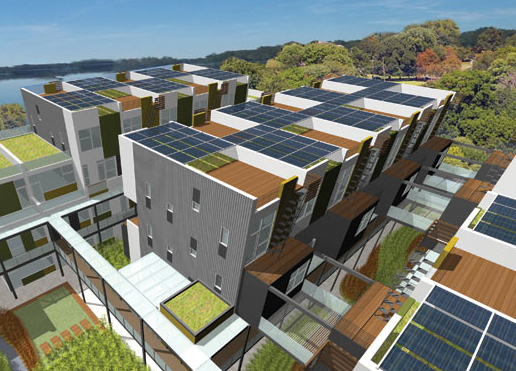
Image Credit: Onion Flats
The Passivhaus (or nearly zero energy building) vs. net zero debate has become an ongoing discussion that rears its nerdy head every few months. It really first took grasp shortly before Martin Holladay published his Net Zero versus Passivhaus blog. Recently, the topic has made its way into several conversations – and my arguments for nearly-zero-energy buildings (NZEBs) or NZEBs + renewables always spark a lively conversation. I was asked to put together a post collating my thoughts on why achieving Passivhaus should take priority over zero-energy buildings, or at least before adding renewables.
It may be worth mentioning that I view this as an apples v. brownies issue (I’ll leave you, dear reader, to decide which is which). On one hand, extreme comfort and consumption reduction (Passivhaus); on the other, energy production (which may or may not entail significant energy conservation measures). Passivhaus + renewables was an active (and lively) topic at the May 2012 Passivhaus conference in Hannover, Germany, and one of the more interesting aspects for me is where people fall on the spectrum – especially as it was a handful of Brits and Americans v. the remainder of the crowd on separating consumption and production.
As stated numerous times, significant energy reductions should be a priority (hence, Passivhaus). From an economic standpoint, I understand how a photovoltaic (PV) array makes sense for a home or business (albeit, a heavily subsidized one). However, a handful of zero-energy buildings in a sea of inefficiency does little in terms of actual CO2 reduction.
Instead, let’s be smart and have the foresight to retrofit (enerPHit!) and build an armada of efficiency (Passivhaus buildings, Minergie buildings, Living Building Challenge buildings – when Passivhaus!) and then, then! – once that’s been attained – let the energy companies do their thing (which they already do better than anyone else, anyway) to develop larger scale renewable projects, to decommission coal plants, and to green the damned grid.
This would have a far greater impact at lesser (collective) cost. It’s also on the radar for much of the European Union – where in the UK, addressing demand could cut up to 22 power stations, and where the Swiss are aggressively planning to reduce consumption by half (!) over the next 30 years.
Those aims, not coincidentally, parallel the goals of the incredibly ambitious Passive House Regions with Renewable Energies (PassREg) program. For those that don’t know, PassREg is yet another program where the leadership of the Passivhaus Institut has been superb. The program will leave the U.S. even further behind Europe. It’s literally the coolest thing since sliced bread, and makes me want to move back to Europe just so I can work on these, too.
The Passivhaus Institut states that PassREg will “… take a critical look the successful models employed by front runner regions, identifying the stakeholders involved, evaluating the driving factors and collecting appropriate solutions that might be applicable in other urban and economic contexts. In turn, the opportunities and existing barriers to the introduction and implementation of PassREg concepts in aspiring regions will be examined. Through PassREg, the wealth of knowledge that arises from this examination of the regions’ models as well as through the case studies of buildings in each region, known as beacon projects, will help aspiring regions to shape success models of their own and front runners to optimise what they already have…”
That’s not to say I abhor zero-energy buildings. We’d love the opportunity to crack open a few more Passivhaus buildings or zero-energy buildings here at Brute Force Collaborative. But if we’re going to shoot for zero-energy buildings, it really makes the most sense in terms of comfort and economics if paired with Passivhaus first.
Thus, I vote Passivhaus first…
It can be difficult for urban buildings and multifamily housing to reach zero energy
Even if achieving Passivhaus levels of efficiency, urban buildings and multifamily projects have proportionally smaller roof areas than detached housing, making it pretty difficult to achieve a zero-energy goal.
And that’s before Donald Trump blocks your solar access with a brass-bedazzled tower. Additionally, urban rooftops are typically utilized as a deck or HVAC parking spot, which can interfere with incorporation of a rooftop PV array. +1 Passivhaus
Not all houses are “solar-ready”
Not all buildings are “solar-ready,” and enforcement/encouragement to make houses solar-ready can have some aesthetically dis-pleasuring consequences.
Do we really want to all have south-facing shed roofs? Who wants to live in that world? Not this guy! What if my gabled facades want to face east-west?
Much of the existing housing stock doesn’t have the roof area, orientation, or solar access to make a zero-energy building feasible, whereas updating to enerPHit or near-enerPHit levels may not be entirely difficult. Pushing the existing housing stock to the level of zero energy with rooftop PV is so difficult, it’s only been attempted by a few projects.
Furthermore, obstacles like trees (and power poles, overhead wiring) can seriously affect the output of a PV array (even when bare in winter, as Marc Rosenbaum recently attested). Whereas, trees are a pleasant thing to look at in a warm, comfortable Passivhaus, and can provide shade from overheating in summer. +1 Passivhaus
Passivhaus buildings need a smaller PV array
Achieving Passivhaus levels of efficiency is one of the surest ways to ensure your PV array doesn’t have to spill over the boundaries of the building.
This is true for homes and commercial buildings. As we noted a few years back, the Bullitt Center’s PV array could have avoided intruding into the public domain had the building met Passivhaus. The amount of PV needed for North American Passivhaus homes to become zero-energy buildings is pretty small, especially compared to what’s necessary in solar-deficient Central Europe.
In looking at some of the Building America projects incorporating PV, in nearly every case, a Passivhaus would have resulted in significantly less PV than what was utilized (!). The PV arrays for many net-zero projects are much larger than would be needed for a worst-case Passivhaus, and significantly larger than an aggressively efficient Passivhaus.
Instead of having PV bleeding out over the entire roof and adjacent garage, you could conceivably get by with just adding PV on your garage. +1 Passivhaus
Retrofit projects could be cheaper if they aimed for PH + PV
When you have an existing project that could be considered solar-ready – e.g., one with a generous south-facing roof or a large enough flat roof – it may actually be less expensive to achieve Passivhaus/enerPHit and add renewables than to just add lots of PV.
Those existing projects in the U.S. that have been able to achieve zero-energy status seemingly do it on the backs of large tax credits and incentives (as was the case for the Grocoff Net Zero project: $49,000 out of pocket, $43,000 incentives/credits!). In a brief breakdown of their numbers, an EnerPHit-type reduction actually would have resulted in avoiding the ground-source heat pump ($21,000), and a “Passivhaus + PV” system would have been anywhere from 33% to 59% smaller. Even tripling the insulation/airsealing cost, adding minisplits and $100/sq. ft. Passivhaus-certified wood windows, the Grocoffs would have spent much less money to achieve ZEB – which by the way could have allowed those generous tax credits and incentives to be spread around to more projects and have even greater economic and environmental impacts. +1 Passivhaus
New buildings could be cheaper with the PH + PV approach
We’ve looked at this on a couple of buildings here in the Northwest that aimed or are aiming to be zero-energy buildings. Two of the more high-profile ones (Bullitt, zHomes) could have actually saved quite a bit of money (through PV/mechanical costs) by achieving Passivhaus first.
We’ve been stating this for years, as have others in the Passivhaus community – but I think we’re finally at the point where the cost to achieve Passivhaus is exceeded by the reduction in PV costs through meeting Passivhaus. Onion Flats Rowhouses in Philladelphia ($129/sf!), which took the PH + PV approach, are a terrific example of this (see Image #1, above).
For the Salem Passivhaus, the size of the needed PV array would only be 2.8 kWp (PHPP) – 3.8 kWp (actual) – to offset the energy consumed. In Germany, where installed PV prices are even lower than the U.S., the emphasis is still on “Passivhaus first, then renewables.” They’ve been doing this in solar-deficient Austria, Switzerland, and Germany for a decade now.
They’ve even surpassed net-zero through the incorporation of Passivhaus: Passivhaus + renewables = Plusenergiehaus (a.k.a. producing more than consuming) – and this was also a large focus at the Hannover conference.
As the cost to achieve Passivhaus in the States drops due to familiarity, smarter designs, smarter Passivhaus integration, and the use of affordable and locally manufactured products (pretty please!) – this will be even more true. +1 Passivhaus
PV ain’t pretty
Yup, like semantics, aesthetics count. The nasty array on the banal house below isn’t even an extreme example.
Sure, there are a few projects with building-integrated PV, as well as a few zero-energy projects, that incorporate attractive PV installs (next post!) – half of them are Passivhäuser. But let’s be honest: most PV installations are an aesthetic abomination.
PV arrays tend to be rather crude, don’t work well with certain roof types (mansard! hip!) – and if the roof angle ain’t where it should be for optimal performance, racking the panels up or down on a tilted array just makes the installation look worse.
This goes doubly for solar-hot-water installations, which except in certain applications don’t really make economic sense anymore, anyway (as Martin Holladay claims, solar thermal is dead!).
I just don’t get the appeal of looking at roof-mounted PV arrays, when they’re usually so poorly installed that even the aesthetically ridiculous spoiler on a VW Beetle looks light years better. +52 Passivhaus
Passivhaus wins on the embodied energy argument
As we’ve blogged (and the Passivhaus Institut and others have shown), the additional embodied energy required to hit Passivhaus is nominal, and is recouped in a few years at most (or less – if using natural materials).
Whereas, studies on the embodied energy payback of PV systems are on the order of nearly a decade (or more) once accounting for the structure, inverter, and location/orientation/system efficiency. +1 Passivhaus
Passivhaus wins on the quantity of rare earth minerals required
You can build a Passivhaus almost entirely without rare earth minerals, but a photovoltaic panel?
Not so much. If mountaintop removal is environmentally devastating, if the tar sands are an environmental desecration – should we really give rare earth minerals a pass because iPhones and androids are überkůl? +1 Passivhaus
A Passivhaus is a resilient house
Resilient buildings have been getting a lot of (deserved) attention lately, thanks to Alex Wilson’s latest venture. In a lot of respects, this is. A certified Passivhaus should have few issues with durability (part of the reason for the extreme airtightness).
A grid-tied PV won’t keep you warm at night during a blackout. Roger Lin’s Arlington Passivhaus lost power for nearly two insanely hot and muggy days last summer. How’d the house perform? Extremely well: “While the outdoor temperature was 92 degrees, the basement was a comfortable 73 degrees. First floor was a warm but not unpleasant 81 degrees. Second floor was 79 degrees… Insulation really works. First, all the insulation in the walls and roof is effectively isolating the indoor environment from the outdoor elements, slowing down the effects of extreme outdoor temperature changes, i.e. after 40 hours of power loss, the first floor only warmed up by 6 degrees (75°F -81°F) and second floor by 2 degrees (77°F-79°F).”
And, as Greg Duncan recently tweeted, the “Winter of ‘extreme storms’ is new norm. Passivhaus ensures comfort from drafts, cold; resilience against outages and respite from loud winds.”
Whether it’s holding in heat, keeping the heat at bay, or reducing external noise, Passivhaus bests a zero-energy building in nearly every case. Another way to think about it: Don’t like living next to that loud street or in that airport approach? Maybe you could use your solar panel as a sound barrier! +1 Passivhaus
Zero-energy buildings are not bound by Quality Control
Finally, and I think this is one of the most important reasons, Passivhaus (at least in Europe) is much revered for being the “quality control” standard (despite PHIUS’s ridiculous proclamation to the opposite).
Recently, a costly zero-energy building wasn’t built well, and during the monitoring process, it became clear there were performance issues. This Living Building, the Tyson Living Learning Center, required an envelope audit – less than six months post-construction!
Shooting for Passivhaus would not only have saved them the headache of the audit, it would also have saved some serious coin. The Center as a “worst-case Passivhaus” would have reduced the amount of PV required by two thirds (!) compared to what eventually was installed/needed to meet LBC.
This debacle led to our critique of the Living Building Challenge program, which we actually support and would love to see heavily adopted – just in conjunction with Passivhaus. +1 Passivhaus
So fix yer damn U-values!
Focus on your air sealing. And build a stunning Passivhaus.
Because then – without any horrendous, oversized, budget-busting photovoltaics slapped on top – your house can truly be a very, very, very fine house!
Mike Eliason is a designer at Brute Force Collaborative in Seattle, Washington.
Weekly Newsletter
Get building science and energy efficiency advice, plus special offers, in your inbox.





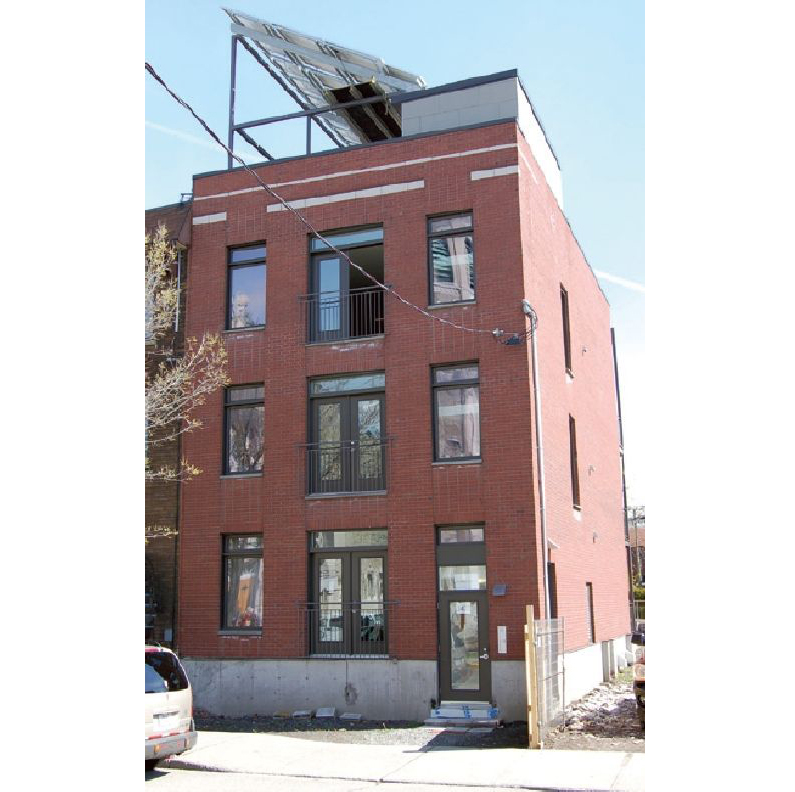
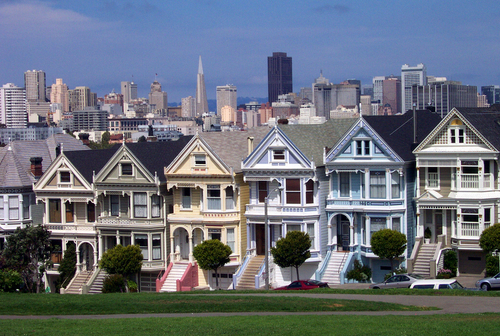


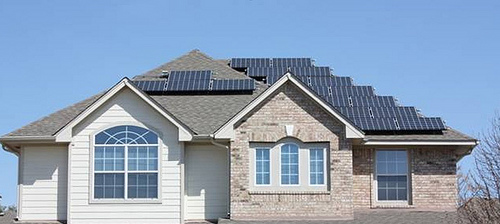
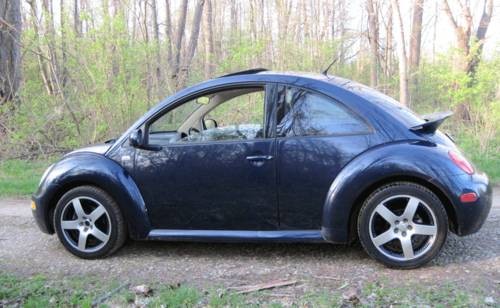

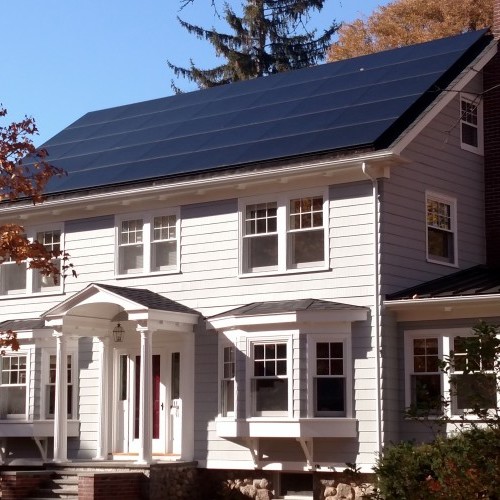
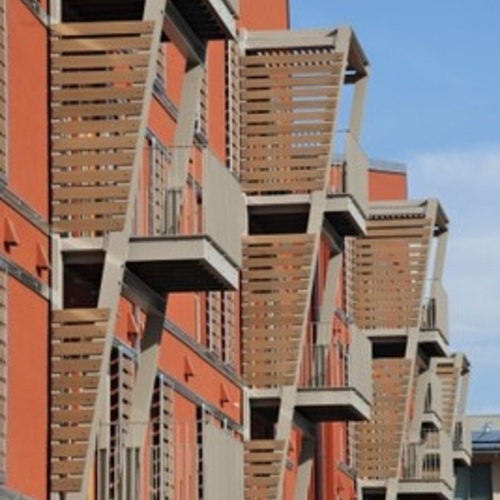

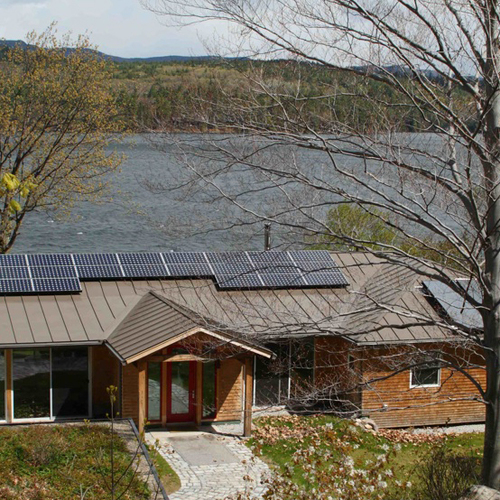






20 Comments
mmmm......delicious red herrings!
I agree with your points that there are situations where PV makes less sense than efficiency. Yes, there are buildings where PV might not be enough for lighting/heating/cooling and cooling and times when one would need PH levels of energy use to reach zero-energy. But in most cases one can reach zero energy with a much faster payback period with levels of insulation and other measures that pencil out more easily.
So many superinsulation strategies say they pay off compared to X, but how does that last step, that last cm of insulation pay off? This is NEVER addressed in PH literature because that last cm is usually insupportable if one is looking for pay back of energy or money in a reasonable time.
At what point does it stop making sense to put energy into foam insulation? When you get payback in ten years? 50? 100? You can ask the same about putting money into foam (or other insulation). You might say that payback periods don't matter since you are not going to be tearing these places down and that might be true if you are certain there will be no adverse surprises five or ten years down the road, but I have seen far too many....problems....with new building technologies to believe that.
"Pushing the existing housing stock to the level of zero energy with rooftop PV is so difficult, it’s only been attempted by a few projects." is the same red herring of comparing PH to lousy houses. Houses built ten years a have insulation levels in their walls that pay back in well under five years and you can not sensibly condition and power that profligate waste using PV even ignoring air leaks, but give houses cost effective levels of tightness and insulation (15-year payback? That's R24 polyisocyanurate outsulation in a 7000degree day climate) and zero energy through PV becomes quite reasonable, assuming grid storage and air-source heat pumps.
My concerns finally boil down to wanting to find the most effective way to make the biggest improvement in sustainability and fearing that less than optimal use of materials and money removes those resources from better uses. I also fear that technically true, but deceptive information will help consumers to make the wrong decisions, creating a backlash against the whole concept of radical and effective efficiency.
Agree and disagree
Mike,
I agree with you that it makes little sense for the average homeowner to produce his or her own electricity, and I listed all the reasons in my January 2011 blog on this topic (Net-Zero-Energy versus Passivhaus). Many of the reasons you list in your blog are the same ones I listed two years ago -- so we mostly agree on that point.
However, I don't think you've provided any evidence that aiming for the Passivhaus standard has anything to do with finding the "superinsulation sweet spot." To do that, it makes more sense to use BeOpt than PHPP.
In most climates in the U.S., aiming for Passivhaus results in uneconomic investments in technology or insulation that isn't cost-effective. So why pay for ventilation systems or sub-slab foam that costs even more than PV? Especially if you happen to have a roof that already faces south. (Or, for that matter, even if you don't -- since you don't need to own a PV system to realize that some Passivhaus-driven investments are over-the-top expensive.)
By the way, you raised the following question: "What if my gabled facades want to face east-west?" Here's my answer: if your gable faces east or west, your house is correctly oriented -- because you have one roof slope facing north, and one roof slope facing south.
Right on...and a few quibbles...
Regarding rare earth minerals - as far as I know, these are only used in thin-film PV systems. Thin-film PV only had a 14% market share in 2011 according this report - http://www.ise.fraunhofer.de/de/downloads/pdf-files/aktuelles/photovoltaics-report.pdf
Do you have a reference for the decade+ embodied energy reference for PV? I haven't seen anything like that in my (limited) research.
Regarding big, energy company-owned PV out in the hinterlands, versus small, building-owner-owned or community-owned PV - I tend to fall on the side of smaller is better just about every time. I certainly don't have data for a good discussion on distributed vs. centralized generation, though I'm pretty sure Rocky Mountain Institute does.
Embodied energy of PV
I agree with John Semmelhack -- there is no way that the embodied energy payback for a PV system is anything close to "nearly a decade."
Here is what I wrote on the topic in an article published in Environmental Building News:
"Over its expected lifetime, a PV system will produce about 15 times the energy used to manufacture the modules, racks, wiring, and other equipment comprising the system. In spite of repeated studies demonstrating that PV systems have favorable energy payback periods, some critics continue to repeat the unfounded accusation that it takes more energy to manufacture a PV module than it will ever produce.
"A recent article in Home Power magazine by Justine Sanchez put the old myths to rest. Sanchez cites a 2006 study conducted by CrystalClear that calculated the estimated energy payback time (EPBT) for grid-connected roof-mounted PV systems. According to Sanchez, the study looked at the EPBT for balance of system (BOS) components (racks, inverters, wires, etc.) and assumed a system efficiency of 75%. “The study shows the EPBT for standard, single-crystalline module PV systems to be two years,” Sanchez writes. Systems using polycrystalline modules (produced with a casting method) had an even shorter EPBT at 1.7 years; modules produced with a ribbon method had an EPBT of 1.5 years. The study used average solar data for southern Europe, estimated at 1,700 kWh/m2 [160 kWh/ft2] per year; average solar production in the U.S. is higher (1,800 kWh/m2 [170 kWh/ft2] per year), meaning the EPBT for U.S. installations is shorter."
also, i wanted to post a
also, i wanted to post a comment that Nick Grant had left on my blog, for those that didn't catch this article there...
"Great post, shame so many don't get this. I found the Hannover discussions very frustrating as our critique of zero carbon was ignored rather than challenged.
Tempting to chip in with further issues such as opportunity cost and the fact that unlike radical efficiency, PV does nothing to reduce the peak power demand (other than for air-con or lights in buildings without windows).
However the main point is, as you say, we need to stop fudging the accounts by considering energy consumption and production as equivalent on the building scale. It makes sense for windows and solar thermal as the usefulness fraction has to be calculated and we get a sensible design. we consider the extra solar gain v the extra losses, cost, overheating etc and get mostly sensible design decisions on that basis. Equating PV to insulation is as you say brownies and apples.
If, as you suggest, we do the energy (and peak power) accounting separating debit and credit,then a lot of paradoxes disappear. Its the same with biomass. Installing a wood stove increases emissions, planting a tree reduces them (simplistically).
Imagine doing your business accounting based on the idea that expenses don't need to be recorded because they get offset by future income. It's true but not very useful for managing a business.
The Homer Simpson school of accounting."
Dustin @1,I just don’t see
Dustin @1,
I just don’t see how comparing existing stock to low energy construction (whether new or retrofit) is a red herring.
While it is possible to pencil out economically to net zero before achieving Passivhaus in certain applications – this is again where I believe it’s not an apples to apples comparison. First, the subsidies/credits/tax breaks issue heavily favors production over consumption. Second, Passivhaus /Minergie/EnerPit are standards of extreme efficiency paired w/ comfort. There is no comfort criteria for Zero Energy Buildings. Third, I don’t believe consumption and production pair well together without insanely generous credits and subsidies – and for some typologies, doing insane things like taking up 15%+ of the visible sky from a streetscape in order to accommodate an asininely large PV array.
Furthermore, it's just not true that the literature doesn't support that the energy isn’t paid back in a short period of time with that ‘last centimeter of insulation. All the literature I’ve reviewed on energy payback of a PH is relatively quick – in some instances immediate. In the UK, and Central Europe, they're starting to build passivhaus buildings at the same cost or less of 'code-built' projects now. Yes, detached residential projects are the most demanding, envelope-wise, and we in America are still struggling to get that under control. As I’ve stated multiple times, there’s a learning curve we’ve been slow to take up on in the States. I was recently sent the envelope specs for a multifamily project to meet PH in 7,500 HDD Maine: R-35 walls, R-80 truss roof, R-30 Floor. That’s just a step above code for us in Seattle.
Also, can we step back from the foam argument? I don’t know anyone in the PH community is advocating for oodles and oodles of foam (suppliers, on the other hand...). As we and the gurus at 475 have noted - you can (and we believe, should) build foam-free Passivhaeuser.
Martin @2,
Correct, I’m not advocating for the ‘superinsulation sweet spot’ – even though I believe that given a smart design, BeOpt and PHPP probably come close to the same R-values (I’m in the process of running the numbers on one of our projects). Passivhaus is way of reducing energy use without compromising comfort or air quality. It’s not solely about energy usage, and that’s another area where I think Passivhaus wins. Net zero houses can still have drafts and bad air distribution, this is why I stated Zero Energy Buildings aren’t a quality control standard.
John @3/Martin@4
Last I read, thin films had the largest increase in market share and was expected to grow significantly over next few decades. The papers I looked at were from EU, NA and China. Lit review (pre-2008) showed low end was ~1.5 – 4 years (w/ relatively high insolation) but went up to 13-26 years depending on location, orientation, whether emissions and all processes were taken into account. Since a majority of my blog’s readers are from Central Europe, where insolation is far less than 1,700 kWh/m2 (same goes for much of the eastern half of the US, most of Canada and the Pacific Northwest) – those payback numbers are not going to be as low as published.
A Swiss analysis showed payback jumped significantly (from 3-5 years to over 25 years) if emissions were taken into account (p. 15). This gets us to the boundary and bad sampling/data issues with LCAs on full environmental impact.
http://www.esu-services.ch/download/jungbluth-2005-LCA-PV-PIP.pdf
Another recent analysis looking at EPBT for a roof-mounted PV array in Hong Kong found 7-20 year payback depending on orientation…
http://www.ucdenver.edu/academics/colleges/Engineering/research/CenterSustainableUrbanInfrastructure/LowCarbonCities/Documents/Lin%20Lu/Environmental%20Payback%20Time.pdf
So it seems a bit of both perhaps, yes payback can be in as little as a few years, but given other factors can still increase to over a decade. I’ll need to think how to re-write this segment.
Lastly, I’ve never stated it takes more energy to make a PV than it will recoup. However, in terms of embodied energy payback – I’m still with the studies I presented a few months back on this - in the long run, the Passivhaus edges out PV.
Great comments, guys. Keep ‘em coming!
back to you, Mike..
"There is no comfort criteria for Zero Energy Buildings."
True, and a foolish person could build a giant PV array to heat the nearly uninsulated house I rent in CA giving a drafty, unpleasant, but "net-zero" house. On the other hand, as Martin has pointed out elsewhere, if you search for the best buy in energy saving or producing technologies, you will end up with a very well-insulated house that you can bring to net-zero with a small pv array...and creating a VERY comfortable house, just not necessarily PH.
"Third, I don’t believe consumption and production pair well together without insanely generous credits and subsidies – and for some typologies, doing insane things like taking up 15%+ of the visible sky from a streetscape in order to accommodate an asininely large PV array."
I agree that subsidies skew market responses and would prefer no subsidies, causing a reasonable net-zero house design to move even farther toward insulation and minimizing the PV required. Subsidizing PV is arguably not the best move, but probably better than fracking gas and mining coal with all their external costs. I'd prefer to include all costs in each source of energy so none have explicit or hidden subsidies.....and then further increasing insulation levels in a way that makes sense. Still, this is a whole different can of worms...
"Furthermore, it's just not true that the literature doesn't support that the energy isn’t paid back in a short period of time with that ‘last centimeter of insulation. All the literature I’ve reviewed on energy payback of a PH is relatively quick – in some instances immediate."
I have certainly seen houses built that use far less energy than standard houses and cost less to build, but this does not mean there is not an even more effective lower level of insulation and other systems. I simply do not see that reducing the level of insulation under a slab from R50 to R40 would cause a significant increase in running costs that would come anywhere near making the capital costs effective. I'd be delighted if you would cite a specific article that tears down my assertion...
Dustin,
Perhaps I'll tackle
Dustin,
Perhaps I'll tackle that in the next post. However, you are right in that the payback of that last inch of insulation isn't instantaneous (though, with a retrofit in a larger commercial building - it very well could be).
With a small Passivhaus project we’re consulting on, the additional inch of sub-slab rigid insulation needed to meet PH reduces the space heating demand by 80 kWh/year. At $0.09/kWh in Seattle, this represents an annual savings of $7.20. Install cost difference would be pretty negligible, given that the slab area is 489sf (Approx. 16 4’x8’x1” boards at say $12/bd = $192 - labor's negligible because we're talking about a 1" v. 2" board). In terms of simple payback, that’s nearly 27 years. However, there are a few ‘extras’. One, we’re about to have a 31% rate hike over the next 6 years, which changes numbers - at 4% energy increase/year NPV = $60. Two, by crossing the Passivhaus threshold, the spec home garnered a premium over the builder’s typical homes. Three, we didn’t design the project (only doing the PH consulting) and can get the sub-slab foam down on projects when we’re designing, thereby reducing those initial outlays. Four, had we gone with a foam-free solution, the additional cost of an extra inch of insulation (BIBS, cellulose) would, in effect, have been negligible.
In the first case you mention, those buildings would qualify as NZEBs. The EU's energy performance of building directive will require new buildings to be Nearly Zero Energy Buildings by 2020, basically Passivhaus/Minergie or equivalent energy usage plus renewables (blah!). See here: http://www.eceee.org/buildings/Steering-2-zerobldgs.pdf
I don't think non-PH NZEBs are bad, but again - I come back to the comfort/performance/quality assurance (and sometimes cost) issues where the advantage goes to PH - and I struggle with putting power plants on buildings. But if you are going to go that route, do it correctly. Had the Tyson Learning Center's LBC gone the PH way, none of those issues would have popped up and the organization would have saved some serious coin.
However, it's not just that project. Almost all the EU projects that are achieving net zero are Passivhaus or equivalent energy usage (and need to be due to the significantly decreased insolation). I've also been looking over Building America Program net zero projects, and am finding similar issues to the Tyson LBC. I'm planning (another future post...) on comparing BA/BC net zero houses w/ the PHPP-calculated energy usage (8.44 kBTU/ft2/yr) and actual energy usage (11.8 kBTU/ft2/yr) of the Passive House in Salem. I have no idea if the BA/BC projects were designed w/ BeOpt or not, but I have noticed some interesting trends: GSHPs and oversized PV systems abound.
Here are a few examples…
Waukesha Demonstration Home (Waukesha, WI)
3,408sf (TFA ~3,135sf). GSHP, solar DHW, ERV and 14.4kWp of roof mounted and tracking PV.
At the Salem PHs measured consumption of 11.8 kBTU/ft2/yr, the Waukesha Demonstration only needs a 9.1 kWp array. At $6.00/watt - the PH represents a saving of $31,800 in PV costs, pre-subsidy.
At the Salem PHs PHPP-calculated consumption of 8.44 kBTU/ft2/yr, the Waukesha Demonstration only needs a 6.5 kWp array. At $6.00/watt - the PH represents a saving of $47,400 in PV costs, pre-subsidy.
In both instances, the GSHP is not needed for the PH and represents additional cost savings. The cost for more insulation, slightly better air sealing and better windows (even expensive PH windows) wouldn't come near that.
Cobblestone Homes (Saginaw, MI)
3,504sf (TFA ~3,224sf). GSHP, ERV and 12kWp of roof mounted PV.
At the Salem PHs measured consumption of 11.8 kBTU/ft2/yr, the Saginaw ZEB only needs a 9.9 kWp array. At $6.00/watt - the PH represents a saving of $12,600 in PV costs, pre-subsidy.
At the Salem PHs PHPP-calculated consumption of 8.44 kBTU/ft2/yr, the Waukesha Demonstration only needs a 7.1 kWp array. At $6.00/watt - the PH represents a saving of $29,400 in PV costs, pre-subsidy.
In both instances, the GSHP is not needed for the PH and represents additional cost savings.This is another instance where the PH could end up saving (total) dollars and wind up with a more comfortable, durable (and foam-free) solution.
Grocoff ZEB retrofit (mentioned in post, Ann Arbor)
2,200sf (TFA ~2,024sf). GSHP, ERV and 8.1kWp of roof mounted PV.
At the Salem PHs measured consumption of 11.8 kBTU/ft2/yr, the Grocoff ZEB only needs a 4.55 kWp array. At $7.00/watt (actual paid)- the PH represents a saving of $24,850in PV costs, pre-subsidy.
At the Salem PHs PHPP-calculated consumption of 8.44 kBTU/ft2/yr, the Grocoff ZEB only needs a 3.3 kWp array. At $7.00/watt - the PH represents a saving of $33,600 in PV costs, pre-subsidy.
In both instances, the GSHP ($21,000) is not needed for the PH and represents additional cost savings. The cost for more insulation, slightly better air sealing and expensive PH windows wouldn't come near those numbers combined.
Location, location, location...
The great majority of homes in CZ1-3, and maybe CZ4, require much less insulation than climates up north, under slab/basement insulation is a no-no because of termites, plus we get a lot more sun hours than y’all. On a well designed and built house, we can achieve net-zero with 1kw/sf, and at the price of PV nowadays, it makes no sense to go Passivhaus.
The Thin Film Industry is Dying
Here in Denver, we're acutely aware of the fact that thin film PV has completely lost its cost advantage, and still struggles with an efficiency disadvantage.
One factory has already closed and GE has scrapped plans for another in the area.
http://www.rechargenews.com/energy/solar/article324854.ece
So the PV vs. PH debate rages on amid constant change. What's the future? Well, PV keeps getting cheaper, while the cost of air sealing and good windows does not.
Armando,
I don't agree!
Armando,
I don't agree! Simply adding PV to a building doesn't make it sustainable, and isn't a measure of efficiency. Furthermore, a grid-tied net zero house in the coal-powered south can lead to more CO2 emissions than my hydro-powered somewhat efficient house in the Northwest.
The issue of cost-effective Passivhaus projects around the globe has been a hot topic at the PHI (and warm/hot-humid climates for PHIUS). There's been quite an emphasis on Asia, especially as China tries to figure out their exponentially increasing demand and supply issues. One of the projects presented in Hannover was the Austrian Embassy in Jakarta (pics: http://www.pos-architecture.com/en/architektur/webdiary/webdiary-embassy-jakarta/) which through the achievement of Passivhaus, reduces energy consumption to 15% of standard buildings, reduces CO2 emissions by 85%, incurs ultra-low operating cost and life-cycle mechanical replacement costs.
The issues for smart design in hot climates (nominal insulation, protection from sun, controlled glazing) holds exactly the same for a Passivhaus in that region as well. And for much less cost than would be needed in Boston. I'd say it makes even more sense on larger buildings, where the mechanical systems can be significantly reduced, almost to the point of paying for the PH upgrade.
Two recent projects by MoS in Santa Fe show that not only is PH uber comfortable, but at $130-$150/sf - cost effective.
Not so fast...
When I do get to see 2-4 Kw/sf systems installed in the South's new and old remodel houses, I do attribute it to lack of education and construction quality, and great sales jobs by the PV industry here. But you should not assume that our NZ houses are leaky and drafty We generally are around HERS 30-50, 1ACH50, 30% of typical HVAC system, and our PV allows to reduce production of power plant energy (Gas, Hydro, Wind and Coal), thus less CO2 and GW. In TX, one can choose clean energy produced on our deregulated grid. I also designed two NZ homes built in NM because they cost less than PH. I guess we just have to agree to disagree, eh?
On the quality of net-zero-energy houses
Mike,
In general, I have to agree with Armando. Your dismissal of net-zero-energy houses is superficial, and (I think) shows a shallow understanding of the projects being built these days.
You wrote, "Simply adding PV to a building doesn't make it sustainable." But designers of net-zero-energy houses profiled on GBA aren't simply slapping PV on leaky ranch houses. Give these designers a little credit!
The analysts who have pointed out that Passivhaus criteria lead to expensive solutions can't be dismissed as easily as you would want. You wrote, "existing projects in the U.S. that have been able to achieve zero-energy status seemingly do it on the backs of large tax credits and incentives." But, in fact, every critique of over-the-top Passivhaus specifications that I have seen uses market costs for PV as a comparison -- not subsidized PV costs.
Thin monocrystalline silicon...
Thin multi- and mono- silicon technologies (from very low-waste casting & ion-implantation cleaving techniques) are going to be hitting the market within the next year or two, cutting the price-floor of down another notch, taking an even bigger chunk out of the embodied energy aspects. With a higher average efficiency thin-silicon is poised to challenge even the cheapest CIGS technology PV on $/W-pk.
Thin silicon PV is also flexible and light weight, reducing the rigidity requirements of panels.
There's an efficiency hit dropping from the 150-170micron optimum to 15-25 micron cells, but it's not a huge hit. (Dropping from a theoretical max of maybe 30-32% to something in the mid-to high 20s.) Even though it's 90% reduction in the silicon physically present in the PV cell, it's about a 98% reduction in the amount of silicon used, due to the low-loss casting or ion-implantation cleaving processes, no re-processing of contaminated silicon-sawdust required.
See:
http://www.greentechmedia.com/articles/read/SiGen-Using-Ion-Implant-to-Thin-Silicon-Wafers
http://www.greentechmedia.com/articles/read/twin-creeks-secretive-solar-equipment-firm-unstealths
The raw volume of exotic materials in most PV technologies is miniscule, but the embodied energy in most CIGS PV is already quite tiny compared to standard silicon. With the new thin silicon goods it may take a more careful embodied energy accounting to discern between them.
Anything determined about the embodied costs of PV were even 2 years ago are now rapidly falling out of date. And with the higher flexibility of thin-PV (any technology) the prospects of being able to avoid the aesthetic issues of panels & racking systems seem to be ripening too.
Some agreement, but...
I agree that some NZ homes contain mistakes. Net-zero houses take many paths while PH must conform to PH standards, making it more likely that some net-zeros will be really poor. In time I hope we humans will come up with some really good standards. In the meantime, let's experiment and learn!
You have pointed out several examples of NZ houses that could have been better and cheaper by losing their GSHPs and adding insulation. I see this as an argument for optimizing NZ homes, not for PH over NZ.
Martin (I think) has pointed out elsewhere that GSHPs are often a waste of money and air source HPs are far cheaper and, when one factors in pumping energy, often more efficient.
In many moderate climates a NZ home and PH will be very very similar. In extreme climates NZ and PH will diverge: if one is trying to create a NZ home in Fairbanks one will end up with multiple-meter-thick walls of cellulose trying to squeak out every bit of heat loss even though it is not economical to save, say, ten BTUs/year per $1000 capital cost (these numbers are pulled from thin air since I don't have the PH software).
I guess my take-away is
optimize designs: intelligence can replace capital and carbon.
PH and NZ might be good starting places, but let's not get too religious.
And let's be aware that first-draft designs we come up with will probably bite our butts in unexpected ways.
And, Mike, thanks for the fun!
Forest for the trees
Most of the discussion in the comments places the focus at the building level and ignores the larger context. In terms of global warming if we are going to "prevent what we can't adapt to" we have to reduce CO2 emissions from fossil fuels to zero by 2040 (to half between now and 2040) (watch Kevin Anderson's Cabot Institute presentation to get a grasp of the urgency) . Coal, oil and gas in the U.S. accounts for greater than 80% of energy supply. So what must be done, and it must be done, is no small task.
Buildings will have to reduce energy demand to the greatest extent possible before even starting to meet that demand with PV. This needs to be done for a number of resons.
First, there is this vast legacy of poorly built and extremely inefficient homes that can't possibly be retrofitted to Net Zero, even if orientation and siting weren't an issue. Given the layout of suburban developments many legacy homes are poor opportunities for PV.
Second, peak winter electricity demand is an issue at the builing level in any climate, particularly cold climates. We will largely be using electricity to heat our homes and the sun isn't shining when it's coldest outside. PV can't meet winter night time peak demand in a cold climate. PassivHaus on the other hand can do what PV can't, which is reduce a buildings demand for electricity. If all new homes were built to the most efficient standard the amplitude of winter night time peak demand will be much lower than if we just built "good enough" houses and then added PV. We have to think of how the grid is going to meet electricity demand in a Post Carbon future. It is much easier for a distributed and diverse renewable energy supply to meet a low amplitude peak demand. So our built environment must be designed to reduce demand as much as possible.
Third, meeting summertime peak electricity demand in a warming world will be difficult. Night time lows may not drop below temperatures that make passive cooling (opening windows) effective. Also, many existing coal and more importantly nuclear electricity generating stations are dependent on surface water sources for cooling. Warmer water sources and also reduced river flows will disrupt electricity generation at coal and nuclear power stations. So again, collectively it will be important to reduce the amplitude of summertime peak demand. We won't be able to rely on PV to get us through the peak, especially on hot nights.
Fourth, for a variety of reasons one should expect electricity to cost a great deal more than it presently does. We can't replace %80 percent of our energy supply for free. That said, you pay nothing for the energy you don't use.
PassivHaus reduces demand. A lot of buildings built to PassivHaus cumulatively reduce a lot of electricity demand. And this demand destruction will make it easier for the available PV, wind, and hydro (which have their supply limitations) to get us through the peaks.
Given how the impacts of global warming are out-pacing forecasts I don't see any other option but to get behind the most energy efficient building standard and demand that all new buildings be mandated to meet it. And from my perspective PassivHaus is that standard.
Did I read that right?
Wow. Somebody actually making sense? THANK YOU Andrew. Oh, and by the way, these buildings will also be comfortable and durable. What a great solution to a potentially catastrophic problem.
Now, can we get over all the kvetching and get building?
Unfair representation of opposing views
The critics of Passivhaus aren't against highly efficient buildings (they've made careers out of making efficient buildings!). They' are questioning some of the decisions driven by the PH certification effort.
The PV people have always said that the first step is to reduce demand.
Also, in regards to the difficulty of retrofitting solar into older homes.... what is the difficulty of getting a historic building to 0.6 ACH?
I think PassivHauser are pretty cool, and I'm glad people are building them, but I'm not ready to declare them the universal standard of green building.
Balancing the green equation - It's complicated
This is a great post and discussion, which gets to some pretty fundamental “eco variables” - on-site vs off-site renewable technologies, new construction vs retrofits, enclosure efficiency (insulation) and a little bit of public policy through subsidies. This is a big mix of values to try and juggle and it’s no wonder that the typical home owner or design professional is having trouble making the best choice. After examining several residential green rating systems, I can state that there is no consensus of these relative values within these documents either.
My personal interest is the retrofit arena, which in my opinion is the most important issue when it comes to climate change. No matter how green it is, every new building has an upfront carbon load that can take decades to achieve carbon neutrality when all the factors are plugged in. The National Trust for Historic Preservation has published a recent study on these values – Quantifying the Value of Building Reuse. (www.preservationnation.org/information-center/sustainable-communities/sustainability/green-lab/lca/The_Greenest_Building_lowres.pdf )
This discussion makes a major point about the large group of here of existing buildings that are not well suited to on-site solar access. These may very well be good candidates for geothermal, which is also a renewable energy source. For these buildings, the question comes down to what level of enclosure upgrade makes sense. Recent studies quickly get to $ 100K+ for a near passive house enclosure retrofit. Compare that to a $ 40 K geothermal system, a more convention efficiency retrofit (storm windows) and utility scale green electricity (available for as little as 2 cents a kW surcharge) and you’ve got something that is far more achievable. The use of off-site renewably produced electricity requires the cooperation of the local utility, but this puts a consumer incentive for them to support wind farms or other technologies at the utility scale. The world of green design seems to be overly enthralled at the concept of on-site renewable solar technologies with high initial cost. If the goal is that of collectively reducing the carbon footprint of the building environment, there needs to be a better balance between available technologies. If we can’t meet the demands of the marketplace we produce a system that needs incentives, which requires high political capital too. I sometimes think that Voltaire got it right when he warned us about “letting the perfect be the enemy of the good.”
payback vs ROI
payback shmayback. that $192 *investment* represents a tax free return on investment of 4% per year--assuming constant energy prices--for as long as the house is standing.
Log in or create an account to post a comment.
Sign up Log in